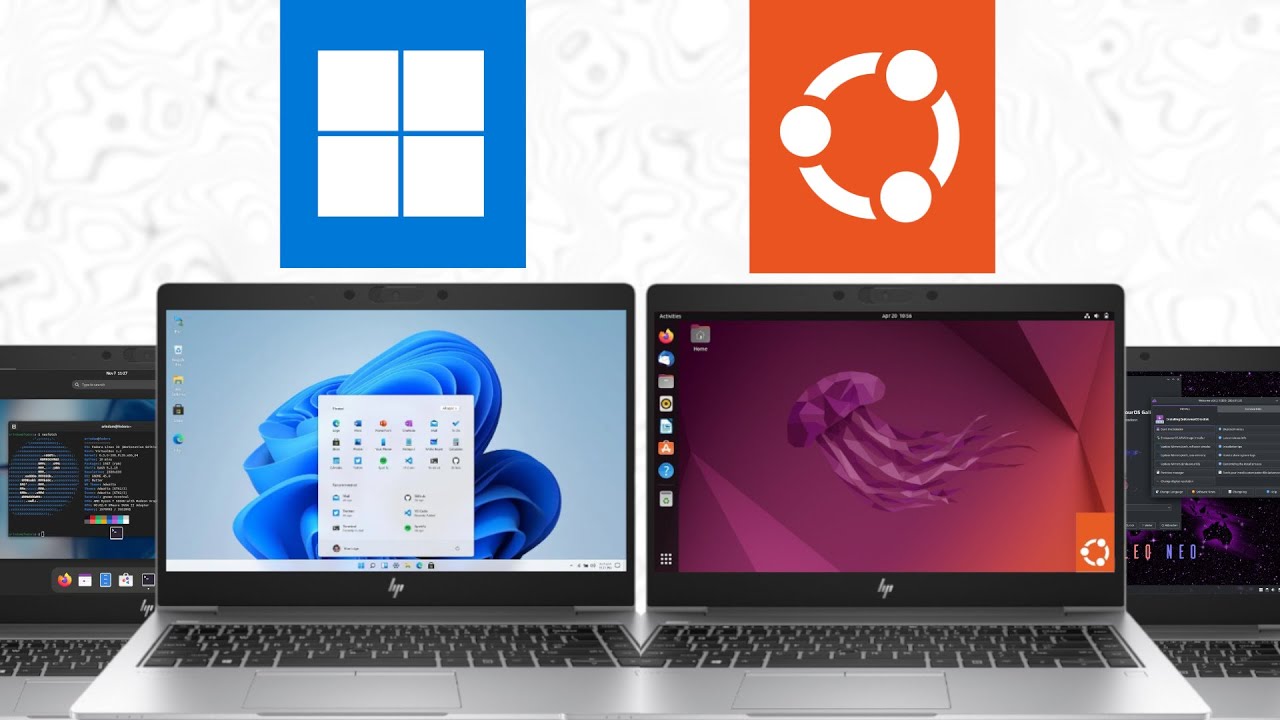Even though different Linux distros are often fairly close in terms of real-life performance and all of them have a clear advantage over Windows in many use cases, we can’t reject the fact that Arch Linux has undoubtedly won the competition. And now I’m so glad to have another reason to proudly say “I use Arch btw”
::: It was a joke of course :::
Jesus
Installation size:
Fedora - 7.7 GB
Arch (actually EndeavourOS) - 45 GB
Ubuntu - 49.2 GB
Windows - 72 GB
How the hell is Fedora so small? That’s insane.
He just look at how much empty space the file explorer showed… I don’t know how good of an indication that it is. The OS may choose to conserve a decent amount of space for things like swap, hibernation file etc.
Also, preinstalled apps.
I mean, I think it’s fair to lump that all together as space taken by the system, no?
It’s not like you can use that space for storing files
I don’t think we know how performance and stability behave when the disk gets full. You can’t really use that space if it would cause your system to crash because it can’t create a hibernate file for instance. It also will vary by system configuration a lot (you need way less swap with 8Gb of swap than 64gb of ram) which makes the comparison only valid for the creators specific configuration.
What are these sizes from? All my Linux installs start with <20G root disks and end up with some spare.
And Windows at 72G? Whilst it’s more than Linux it’s not that much.
I think the videomaker may be failing to account for swap space. The latest Fedora releases use zram (swap that lives in memory instead of hard disk) by default, while the rest do not. Windows in particular does not take 72G and tends to be aggressive in swap allocation. The fact that he presents this data as “free space available” adds confusions while seemingly burying the simplest answer.
deleted by creator
Are you familiar with ZRAM ? I do not understand your certainty that I am incorrect.
deleted by creator
Zram is swap in ram. It uses fast compression to quickly compress memory instead of moving it to disk.
The disagreement here might be a semantic one. When people say “swap” they’re usually referring to the swap partition on disk, not just any memory that can be used to “spill” to.
What you are describing with zram serves a fundamentally different function from swap space. If the OS dumps its memory to swap, the PC can lose power and still recover. If it compresses LRU memory to zram, and loses power, it cannot recover.
Both are useful in low memory situations, but swap covers more than that. Most familiar with swap space would agree that its location on a nonvolatile disk rather than in volatile memory is critical to what makes it “swap” space.
How the hell is arch so large? My laptop is only 27GB and that includes all user data and several years of crap being installed as well as several docker images. A fresh install should rival that fedora install.
Yea I don’t understand either
I’ve recently installed arch in a VM and it didn’t take more than 8GB. That’s with firefox and vscode installed
7GB is a reasonable size for a Linux install with a GUI and some software. The rest are excessively large. I’ve never gone over 30GB of disk usage in my root partition, even with a large number of programs installed.
It seems quite likely that, in the Arch ( EOS ) system at least, a tonne of that space is being used up by the package cache. By default, the system keeps copies of the packages for all software you install. This can indeed take gigs of space but it has nothing to do with your running system. A simple command purges them all and reclaims the space. You would obviously want to do this before reporting installation size. I bet he did not.
Arch package spliting is not as hard as Debian/Fedora.
But IMO, it’s because Fedora uses BTRFS with compression enabled.
Removed by mod
If Windows 10 immediately destroys itself while trying to do its first update, you didn’t actually fit it in 16gb. It hasn’t fit inside of 32GB for several years now.
Ya, I am not going to trust anything coming out of a post that cites that numbers for install size. As others have said, even the Windows one is bonkers.
As an EOS user myself, I love the conclusion but have no faith at all in the methodology.
If you want an article to make Linux look good, a test of the new Damn Small Linux would be interesting. It fits a basic version of practically every program you need into a 700 MB system. It also includes the APT package manager and full access to the Debian 12 stable repos so you can easily add anything you want on top of that.
It would be interesting to know what footprint it would require to run the “tests” he runs here.
My guess will be hibernation file and swap. If any of those had suspend to disk enabled, the hibernation file will be the same size as installed Ram… which can take up a good percentage of that used space. I have a pretty bloated xUbuntu install on my system right now and it’s sitting at 10.6GB. Including swap and /home, but no hibernation file.
Hibernation I’ve found handy on my laptop, but I wish there was like a fastboot option with Ubuntu. I know windows 11 does it to boot faster.
Because it runs everything stock
Good intentions but many of these tests are arbitrary and flawed.

Where’d you get that image? I made that 7 or 8 years ago. Has it been making the rounds? It’s weird to see it in the wild lol
Lol @ the idea that backtrack/kali is someone’s daily driver.
Windows wouldn’t be too terrible if it wasn’t for all the pop ups all the time.
I need to work with it because I need to create a WPF app with Visual Studio, and when I switch from Windows to my personal computer, the difference is mind blowing.
Windows push you fucking add with a notification sound. It’s probably on me that I didn’t disable yet, but I don’t have to do that on any Linux distro.
AW man, my first choice back in the days was Debian. Seeing now your map made me remember the pain of learning along the way while solving nuclear bomb events and configurations that I had no idea even existed. Still, it was a great experience! Nowadays I just use win 11.
Shhh! Windows bad!
- Edge Flatpak: unofficial, using zypak, same app on every Distro. Also launch times are damn irrelevant
- “storage used” is likely just the DEs filesystem abstraction
I was very very surprised about Ubuntu starting so fast. Afaik they preload Snaps now, which should increase that startup time.
Why
How is fedora 2x faster in video rendering? I don’t get the huge gaps between the Linux distros in general. Like arch being 20% slower in php and Ubuntu 20% faster in kernel compilation
I think it depends on kernel/software/driver versions and will vary when these change. Also bloatware is a thing, even though it doesn’t affect the results very significantly
Different distros build their packages with different options and have different versions of those packages so the Ubuntu and fedora php packages might have an optimization the arch one didn’t
Could be the memory performance if it’s light GPU usage and memory is the bottleneck.
Where my openSUS at ?
Still updating
Haha yeah, zypper is so damn slow. I thought about trying dnf in opensuse but didn’t want to risk breaking my install.
Wait I thought DNF is the slow one. Is zypper even worse?
zypper is absolutely obsolete you don’t have parallel downloads and it has to connect for each package so when you have 1.2GB install omg
edit: If you have more than 1000 packages to update/install you’re in for a treat
APT doesn’t have parallel downloads by default either. But in my case it’s still 100 times faster than DNF, especially in terms of fetching. As I remember, once I had to wait for like 10 MINUTES to install htop on a Fedora live ISO. That’s why I gave Fedora and DNF itself a big red DNF and started using Arch btw
And their zipp animation makes no sense if it is fast
Opensuse? WHERES GENTOO
Still compiling.
Yea I agree. We need more distros tested
Windows just losing in nearly every metric. Why am I not surprised? However fedora? What’s going on?
selinux probably
I use Fedora btw
Hmm idk.
Here is an alternative Piped link(s):
https://piped.video/fS8_4GDDJrY
Piped is a privacy-respecting open-source alternative frontend to YouTube.
I’m open-source; check me out at GitHub.
Where OpenSUSE? :(
God damn Arch users. /s
Does anyone have a similar video but only for graphics. I want to know more about the floating point ops, OpenGL and DirectX with Wine compared across those 4.
I don’t remember such videos. Though there should be Windows vs Linux benckmarks for popular games that support both operating systems (natively or with Wine)
Long live to my boi Arch
FreeBSD’s boot speed is just behind arch a little bit (on HDD).
But Windows 8 (with fast startup) on an core 2 duo machine with 1G of RAM boot faster than any debian, ubuntu. (the boot speed decrease when you upgrade hardware lol :) )
I had a Windows 8 machine (8G of RAM) in the past. It booted in like 15 seconds. But on Windows 10 or Linux it took more than a minute. Why didn’t Microsoft brought this feature to Windows 10?
What feature???
This very fast startup thing. On Windows 10 and 11 it doesn’t really work
No it works. When on my windows 10 machine boots in < 15s. When off it takes a minute (HDD)
Hmm in my case it was the same 1 minute +
You know Arch users can just tattoo it on their forehead. That way they don’t even have to say ‘btw, I use arch’. People can read it on their face.
Isn’t that trope getting a little bit boring?
Nah it’s fun to say it yourself. And it’s even better to say it when there’s an advantage over all the other distros























